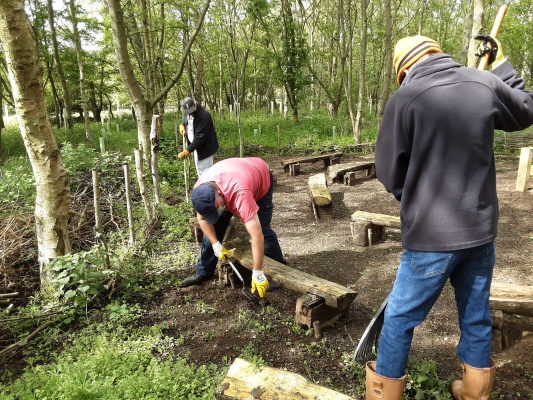Newly-published study highlights how access to green or blue spaces boosts mental health
The study, funded by the National Institute for Health & Care Resarch (NIHR) , saw researchers examining data covering a 10-year period. This made it the largest, most comprehensive evaluation of differences in exposure to green and blue spaces on mental health.

The study team’s findings highlighted the beneficial role of greenness and access to green or blue spaces in reducing socioeconomic-related inequalities in mental health. They also discovered every additional 360m to the nearest green or blue space was associated with higher odds of anxiety and depression.
The study was led by researchers from the University of Liverpool. They worked with researchers internationally to anonymously link three groups of records:
- household greenness
- access to green and blue space
- GP records of anxiety and depression for over 2 million adults in Wales
The effects of green spaces on mental health are well documented. However, using the medical records of an entire adult population over such a length of time gives a new level of understanding to this work.
Huge potential
Richard Mitchell, Professor of Health and Environment at the University of Glasgow, said: “This brilliant study gives us three reasons to be cheerful. First, it confirms that natural environments around us really do benefit our mental health. Second, the benefits seem strongest for those most at risk, so there’s huge potential for tackling the gulf in health between richer and poorer people. Third, the study shows what great science we can do in the UK using our world-leading health datasets safely and securely.”
The researchers stressed investing in improved public green spaces might bring mental health benefits to everyone. But this would be particularly beneficial for those living in more deprived areas. Their findings can support organisations and authorities responsible for green and blue spaces. It can help them to engage planners and policymakers to ensure that local green and blue spaces meet residents’ health needs.
Professor Sarah Rodgers, Professor of Health Informatics at the University of Liverpool, said: “Our study has shown that green and blue spaces are likely to protect people from needing to see their GP for anxiety or depression, and in places where people have fewer resources overall, living near these spaces seems to have a bigger protective effect than for people living in areas with more resources.”
Need for more research
The researchers also called for further related studies to be undertaken in future. They say a greater understanding is needed of why those living in lower-income and higher-income areas are affected differently by access and exposure to green and blue spaces. They argue this will ensure those in most need have access to free green and blue spaces. They believe it will also help to protect the health of our population.
The full study has been published in The Lancet Planetary Health. It has been funded by our Public Health Research (PHR) Programme. For more information, please visit the Funding and Awards page on our website. https://www.nihr.ac.uk/news/study-funded-by-nihr-highlights-inequalities-in-access-to-green-spaces-and-mental-health/34610

Regional support
HEY Smile Foundation, supported by the Community Fund, is now delivering their Growing Green and Blue Health project to continue working in the region to support the development and upskilling of Green and Blue Health opportunities.
The project will work closely with the Humber and North Yorkshire VCSE Collaborative’s leadership to support VCSE groups running outdoor and in-nature activities to develop their offer and skills with regards to health and wellbeing outcomes.
To find out more about the project, and to get involved, please email ah@heysmilefoundation.org






